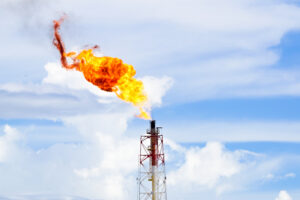On December 2, 2023, the EPA announced a final rule that’s expected to sharply reduce emissions of methane and other harmful air pollution from oil and natural gas operations.
First announced at the 28th Conference of the Parties to the UN Framework Convention on Climate Change (COP28), the rule includes standards to reduce methane and volatile organic compounds (VOCs) from new, modified, and reconstructed sources. It also includes Emissions Guidelines for states to follow as they develop plans to limit methane emissions from existing sources.
“Oil and natural gas operations are the largest industrial source of methane pollution in the U.S.,” states the EPA’s Key Things to Know Fact Sheet on the final rule. “Methane is a climate ‘super pollutant,’ and rapid, sharp cuts in methane emissions are a crucial addition to cutting carbon dioxide in slowing the rate of warming of Earth’s atmosphere.”
The final rule includes a comprehensive suite of pollution reduction standards that address the largest sources of methane and other harmful pollutants at oil and gas facilities, including methane that leaks or is vented from equipment and processes. The rule includes:
- The phase-in of a requirement to eliminate routine flaring of natural gas that’s produced by new oil wells;
- A requirement for comprehensive monitoring for leaks of methane from well sites and compressor stations while giving oil and gas companies flexibility to use low-cost and innovative methane monitoring technologies;
- The establishment of standards that require reductions in emissions from high-emitting equipment like controllers, pumps, and storage tanks;
- Required documentation that wells are properly closed and plugged before monitoring is allowed to end;
- A requirement for owners and operators to monitor flares and other combustion control devices during routine leak monitoring surveys and to implement other compliance assurance requirements to ensure these control devices are operating properly on a continual basis;
- A requirement for storage vessels (tanks), including groups of adjacent tanks known as “tank batteries,” to reduce emissions by 95%;
- The setting of emissions standards for dry seal compressors, which weren’t previously regulated; and
- A requirement for owners and operators to use best management practices to minimize or eliminate venting of emissions from gas well liquids unloading.
In addition, the final rule includes a Super Emitter Program that will use third-party expertise in remote sensing to detect large methane releases or leaks, known as “super emitters,” which recent studies have indicated account for almost half of methane emissions from the oil and gas sector.
Key things to note regarding the final rule include:
- The EPA estimates the rule will avoid an estimated 58 million tons of methane emissions from 2024 to 2038 and 16 million tons of smog-forming VOC emissions and 590,000 tons of air toxins.
- The EPA considered nearly 1 million comments on two proposals as it developed the final rule.
- The rule recognizes and encourages innovation in methane detection technology by expanding options for using advanced methane detection technologies, like satellite monitoring, aerial surveys, and continuous monitors, to find leaks. By creating a streamlined pathway for owners and operators to use new technologies as they develop, it encourages continued innovations.
- The rule gives industry time to prepare to meet requirements and to secure necessary equipment, including a two-year phase-in period for eliminating routine flaring of natural gas from new oil wells and a one-year phase-in of zero-emission standards for new process controllers and pumps outside of Alaska.
- The rule gives states, along with tribes that wish to regulate existing sources, two years to develop and submit their plans for reducing methane from existing sources. The final emissions guidelines also give existing sources ample lead time for compliance, providing three years from the deadline for plan submission for existing sources to comply.
- Benefits of the rule are estimated at net climate and ozone health benefits of $97 billion to $98 billion from 2024 to 2038 ($2,019)—the equivalent of $7.3 billion to $7.6 billion a year after accounting for the costs of compliance and savings from recovered natural gas.
- By preventing methane emissions, the rule will recover enough natural gas to heat nearly 8 million homes for the winter.
For more information, see the EPA website on the final rule.

